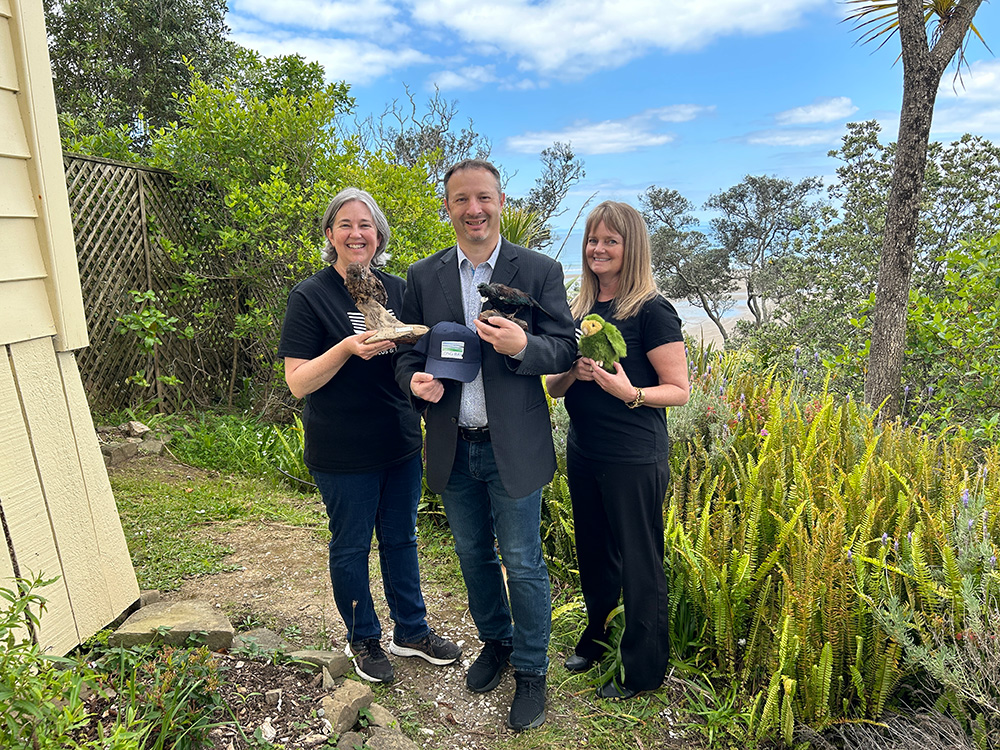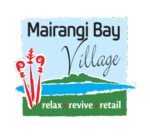Summer’s almost here. Perhaps more than ever in recent memory, we’re all hoping for good weather and a chance to truly relax, spend time with friends and whānau, and enjoy the myriad of local events.
The programme of exciting activities which bring us all together certainly doesn’t create itself! Behind every promotion and event is a dedicated (exhausted) team, almost certainly including volunteers, who consistently give their time and energies for the good of our community.
Who are the people and organisations at the heart of life in the East Coast Bays? How do they plan their activities? And how are public sector cuts impacting their efforts and projects?
Let’s begin with our business hubs. Browns Bay, Torbay, and Mairangi Bay are BIDs (Business Improvement Districts). There are 51 BIDs across Auckland, representing 25,000+ businesses with a combined capital value estimated at $72.7 billion. Each BID is run by a business association, with targeted rates funding projects and activities to support economic growth in the area.
The targeted rate is based on the number of rated commercial properties as defined by Auckland Council, and the money is collected and distributed to the BIDs by council. This funding covers the operational costs of running the business association and remunerating the BID manager to deliver a pre-approved annual schedule of promotions, events, ad hoc initiatives, and advocacy.
Securing additional sponsorship is vital. For example, in 2023, Hibiscus and Bays Local Board granted funding, which amounted to 17 per cent of Browns Bay BID’s total income towards initiatives that fulfilled their funding criteria. In addition, BIDs also rely on the generosity of local sponsors (i.e., BID members) to support and enhance projects.
While a business association’s responsibility is to ensure that financial commitments are met through targeted funding, they are also charged with identifying other resources, be it financial or personnel, through collaboration with other groups and organisations, and so on, all of which are driven by the desire to improve outcomes for the community.
Kim Murdoch is Browns Bay’s dynamic town manager. At the behest of Browns Bay Business Association’s (BBBA’s) executive board, Kim is a key figure behind many of our most-loved events, including Stihl Shop Browns Bay Boys Toys, Summer Spectacular, and, of course, the Safe Drive Testing Browns Bay Christmas Parade. She works collaboratively with neighbouring BIDs and the likes of Bays in Action, Rotary, East Coast Bays Library, and Bays Work in Progress.
Advocacy and community engagement are essential, she says. “We must be in harmony with other organisations and the community overall. None of us can operate effectively in isolation.”
All events are set up to provide fantastic entertainment and entice visitors from outside our district to engage with local retailers and hospitality venues.
“Find a reason to take part,” Kim urges Bays’ business owners. “Taking a stand at, for example, Summer Spectacular could be an opportunity to interact with customers you wouldn’t otherwise meet. Grow your network. Get involved!”
Where do local boards fit into the picture?
A Hibiscus and Bays Local Board representative attends the business associations’ regular meetings. For Browns Bay, it’s Gregg Walden. For Torbay, it’s Victoria Short, and for Mairangi Bay, it’s Julia Parfitt. “The business associations deliver more than just local economic growth, they deliver events and activities that bring the community together and help make the Bays such a wonderful place to live,” confirms Alexis Poppelbaum, who herself is delegated as a backup representative for Browns Bay.
As mentioned, the local board can allocate some of its budget to subsidise local events. That’s essential, says Kim, because the cost of traffic management alone runs into thousands.
However, like other public sector entities, local boards have been significantly affected by cuts. Hibiscus and Bays lost over XX per cent of its budget compared to the previous year. This has resulted in some tough calls, such as discontinuing Kauri Kids ECE programmes in East Coast Bays and Stanmore Bay. Alexis says this decision was extremely difficult and wasn’t without its frustrations. “As part of its Annual Budget decision-making process, Auckland Council confirmed regional funding for the centres would be cut,” she explains. “They gave the ‘opportunity’ for affected local boards to take over the running costs. But our budgets had already been reduced – and it’s very hard to do more with less .
“The board was placed in an untenable position by the Governing Body in this regional issue and decision, compounded by a lack of information or proper, fair consultation conducted with parents and staff.”
While debating what to do, hard questions were asked. “We had to remove the emotion and objectively consider whether this ECE provision was a core function of local government.
“Ultimately, we concluded that it was not.”
However, the board was “extremely disappointed” with the proposed three-month exit period that had been set for stopping the programme’s funding. “We felt this was very inappropriate, as research showed it didn’t give families enough time to explore other ECE providers.”
The board, therefore, voted to extend the exit period to just before Christmas. “This is being funded from our own stretched budget, but we really felt that it was the only fair thing to do – even though a decent exit period should be funded regionally and not coming out of our local budget.” Alexis comments.
It’s impossible to predict what the next 12 months will bring. However, as the Mayor of Auckland’s office looks to reduce the city’s debt, ongoing cuts seem inevitable. Mayor Wayne Brown also proposes slashing the number of local boards by almost half, from 21 to 13. These would be “more powerful” than those presently, he says.
Although this course of action could arguably reduce bureaucracy and double-ups of paperwork (e.g., fewer annual budgets and plans), Alexis is concerned that it risks “a loss of good grassroots democracy and local representation, and could lead to more party politics in local government”.
How can we all play our part to keep Bays’ life thriving?
What’s your passion?
Alongside the business associations and local board is a plethora of amazing non-profit organisations, including Restore Hibiscus and Bays (encompassing Restore Deep Creek), residents’ associations, and North Harbour Community Patrol. All of these work tirelessly in their sector for the greater good.
Whether it’s the environment, opportunities for our younger generations, sustainability, crime prevention or multicultural events, there’s a community organisation that would love your support.
Many community groups are listed on the Heart of the Bays website: ecbcp.co.nz/bays-connect.html (Please also refer to footnote below.)
Concerned about local issues?
Ranting on social media about ongoing problems with car parking, congestion, anti-social behaviour, graffiti and so on does little in any real sense to improve or alleviate a situation.
Your local board welcomes residents at its monthly meetings at 2 Glen Road. It’s a chance to ask questions and hear first-hand about decisions affecting our area. “The meetings are quite informal,” reassures Alexis. “Ideally, we’d like to know in advance that you’re planning to come along, but that’s not essential. Please don’t think you have to prepare a script, either!”
Want to know more about what’s occurring in the Bays?
Make sure you follow your local business associations on Facebook:
- Browns Bay & Friends
- Torbay Village, New Zealand
- Mairangi Bay Village
They share their own news as well as updates from local companies and organisations.
The Hibiscus and Bays Local Board Facebook page is another excellent source of information:
- Hibiscus and Bays
Author’s note: Heart of the Bays (HOTB), formerly known as East Coast Bays Community Project, is a not-for-profit organisation. Located at 2 Glen Road, its remit is to connect, support, and enrich the lives of our East Coast Bays communities from Long Bay through to Castor Bay. HOTB’s chairperson, Pam Martin, declined requests to contribute to this article, citing time constraints. ShoreLines suggests that readers go to ecbcp.co.nz, sign up for the e-newsletter, and follow Heart of the Bays on Facebook for news of upcoming initiatives and events. You could also visit HOTB’s premises. Whether you want to learn a new skill, join a support group, get fit or have some fun, HOTB should be able to connect you.






